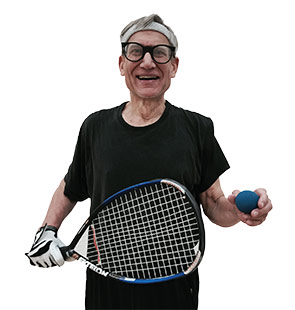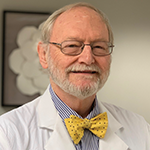
Like many rheumatologists who treat patients with rheumatoid arthritis, Richard Brasington, MD, professor in the division of rheumatology at the Washington University School of Medicine in St. Louis, knows that patients do better over the long term when they are vested in their care. Still, when he asked a new patient in March 2009 what he wanted to gain from treatment for RA, he was surprised by John Reigstad’s answer: “I want to get back to world-class tournament racquetball.”
“That wasn’t what I was expecting to hear,” Dr. Brasington now recalls. “What was striking was that the patient was asking for something that I thought probably was not achievable.”
It turns out that Dr. Brasington’s initial assessment of his patient’s goals was premature, because in John Reigstad he encountered an exceptional individual determined to remain active in the face of his rheumatoid arthritis and willing to be a full partner in the physician–patient relationship.
The Acute Phase
Reigstad’s symptoms had first appeared about six months earlier, in October 2008. As a champion racquetball player (Note: He won a world championship tournament in the men’s 55–59-year-old division in 2005), he was weight training for another competition when he injured his shoulder. At first, he attributed the event to incorrect positioning during a set of shoulder presses. But soon, his hands swelled and his body began to ache, and he realized something serious was going on. He remembers, “Trying to grip my racquet produced excruciating pain.”
Even at this stage, Reigstad employed remarkable coping strategies for dealing with the painful onset of his disease. As he became progressively weaker and unable to work out, exercise, lift weights or play racquetball, he joined the Botanical Gardens of St. Louis for daily walks and reprised his avocation as a nature photographer.
“Champions keep playing until they get it right.”
Finding the Right Combination
Reigstad first consulted his internist, who prescribed ibuprofen and acetaminophen, and eventually referred him to a rheumatologist. That physician started Reigstad on prednisone. But he was “never comfortable” taking the steroid and reports he didn’t get much relief. “About that time, I also developed frozen shoulder syndrome, so severe I could not thread my belt loops with my pants on. I full-dosed with ibuprofen and acetaminophen around the clock for six months with no feeling of progress. I kept searching for answers.” A racquetball opponent suggested Reigstad see the orthopedist that had done his shoulder replacement. After multiple cortisone injections, Reigstad’s shoulders improved, but his other symptoms had not.

